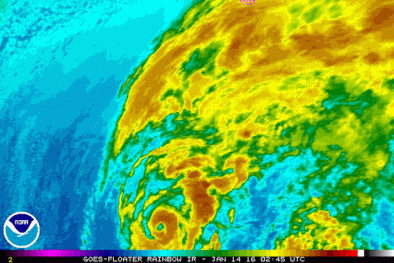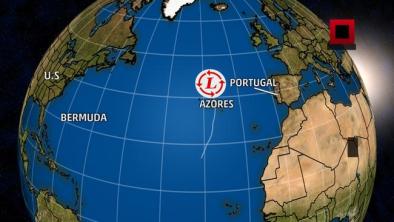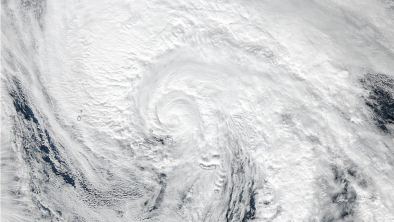Unprecedented: Simultaneous January Named Storms in the Atlantic and Central Pacific

As we ring in the New Year with record to near-record warm temperatures over much of Earth's oceans, we are confronted with something that would have been unimaginable a few decades ago: simultaneous January named storms in both the Atlantic and Central Pacific. The earliest named storm on record in the Central Pacific, Hurricane Pali, formed on January 7, and now the Atlantic has joined the early-season hurricane party, with Subtropical Storm Alex spinning up into history with 50 mph winds in the waters about 785 miles south-southwest of the Azores Islands...
Between January 8 and 12, pre-Alex tracked generally eastwards over ocean waters that were 22 - 25°C (72 - 77°F); these temperatures were near-record warm for this time of year (about 2 - 4°F above average). These temperatures were just high enough so that Alex was able to gradually gain a warm core and become a subtropical storm. It is unlikely that Alex would have formed if these waters had been close to normal temperatures for this time of year. The unusually warm waters for Alex were due, in part, to the high levels of global warming that brought Earth its warmest year on record in 2015. Global warming made Alex's formation much more likely to occur, and the same can be said for the formation of Hurricane Pali in the Central Pacific. To get both of these storms simultaneously in January is something that would have had a vanishingly small probability more than 30 years ago, before global warming really began to ramp up
Related Content





